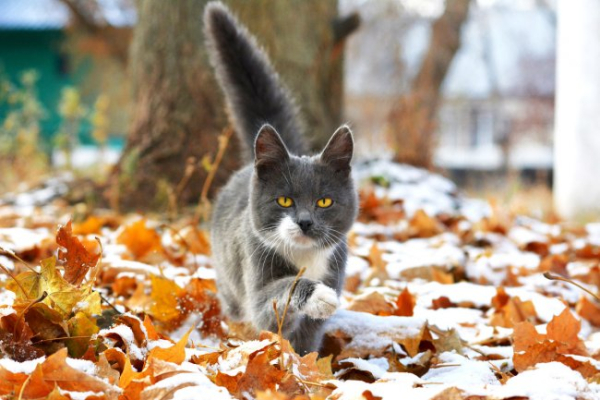
In the last month of autumn, the Slavs tried to observe weather conditions. They could predict the spring, whether the harvest would be good, whether the frosts would linger or an early thaw would arrive. People also call November “leaf rot” and “half-winter.” Many superstitions are associated with this autumn month.
- If the wind blows a lot of snow, then there will be more bread.
- If the frozen ground is covered with snow, then we can confidently count on a good wheat harvest.
Ancestors believed that in November winter and autumn fight.
On November 2 , the feast of Zadok, Artemius, people pray for deliverance from unnecessary death. It is customary to turn to Saint Artemius for help if one suffers from hernia.
November 4th is the Winter (Autumn) Kazan Feast Day. Rain is inevitable on the day of Our Lady of Kazan. Our ancestors believed that if the sky cried on Our Lady of Kazan, the rain would bring winter. Our Lady of Kazan was revered as an intercessor for women. It was believed that those who married on this day would live happily. On this holiday, people did not travel far from home.
November 8th , St. Demetrius' Day, was celebrated. This week was considered St. Demetrius' Week, or Grandfather's Week. If it was cold and snowy on this day, a late and cold spring was expected. If a thaw occurred, a warm spring was expected. Great-grandfathers used to say, “If St. Demetrius' Day is snowy, then Easter will be snowy too. And if St. Demetrius' Day is snowy, then Easter will be snowy too.”
On November 10th, on Nenila-Flax and Paraskeva's Day, young women prayed for good husbands. On this day, women's work was forbidden.
On November 11th , the feast of Anastasia the Shepherd and Abraham the Shepherd, the feast of the shepherds was celebrated. On this day, it was customary to feed the shepherds in gratitude for their care of the sheep. From this day on, sheep shearing began. In the steppe regions, it ended.
November 12th was the day of Zinovy the Tit-Father's Day. It was considered the Tit-Father's Day. It was believed that winter birds flock together at this time. Among them, you could see titmice, goldfinches, bullfinches, jays, and others.
On Kuzma-Demyan (craftsmen, chicken coop keepers), November 14th , fell Kuzminki—a commemoration of autumn. If the day was snowy, a major flood was expected in the spring. If leaves still remained on the trees on this day, the following year would be frosty. On this day, ancestors slaughtered chickens.
The saints were venerated as patrons of crafts, the most important of which were blacksmithing and women's handicrafts. Before starting work, one would pray to Saints Kuzma and Damian and ask for their help in finishing the job before others. Kuzminki was popularly known as a maiden's holiday. Icon.
On Akundina, November 15 , the clanging of mills and flails in barns was constantly heard throughout the villages.
On November 19 , on the day of Paul and Varlaam, if a lot of snow fell, then winter promised
be snowy. If the ice on the rivers had formed piles by this time, it was believed that there would be piles of grain too. And if the ice lay smoothly, then the grain would be smooth too.
Fedot-Ice-Down Day fell on November 20th . Our ancestors believed that if the road was bumpy on this day, then the bread would also be bumpy (good).
November 21st was celebrated as St. Michael's Day. From the day of the Archangel Michael, winter began to forge frosts. If frost was observed, heavy snow was expected, and if fog was present, thaw was expected.
Frosts began on Matryona's Day— November 22nd . Hoarfrost on the trees promised frost, fog—a thaw.
November 24th was the feast day of Theodore the Studite. Old-timers used to say that with Theodore the Studite, winter would become wicked.
On Ivan the Merciful, November 25 , if you observed rain or snow, then you should expect a thaw before the Entry into the Temple (December 4).
On November 27 , Philip's Day, if there was frost, a good oat harvest was expected the following year. The day was considered the end of the wedding weeks. This date coincided with Philip's fast—the beginning of the Nativity Fast.
November 28th was the feast day of Guriy. Guriy was known among the people as a dental healer. People turned to him in prayers for relief from dental ailments.
On November 29 , St. Matthew's Day, it was believed that the earth would sweat (fume). If wind was observed on this day, it was believed that snowstorms and blizzards would last until St. Nicholas Day.
It was not without reason that November was considered a half-winter month. Most folk beliefs of this month are connected precisely to the winter's prospects. Folk wisdom was heeded and passed on orally. Thus, many beliefs have survived to this day.





